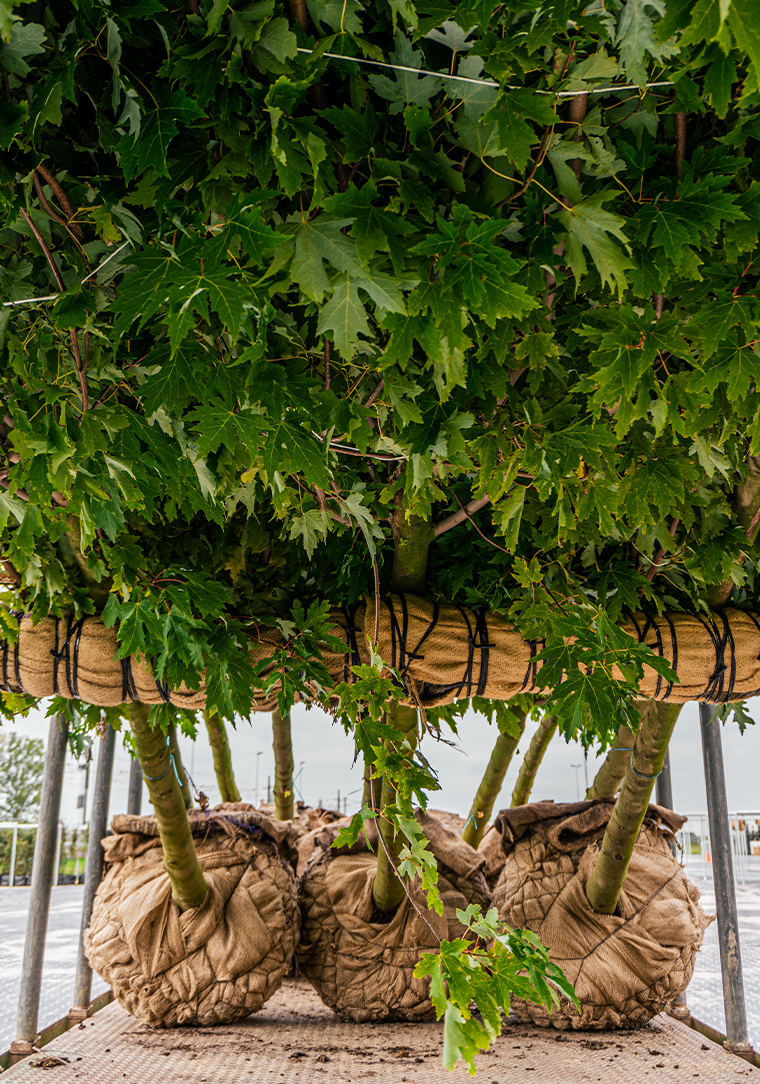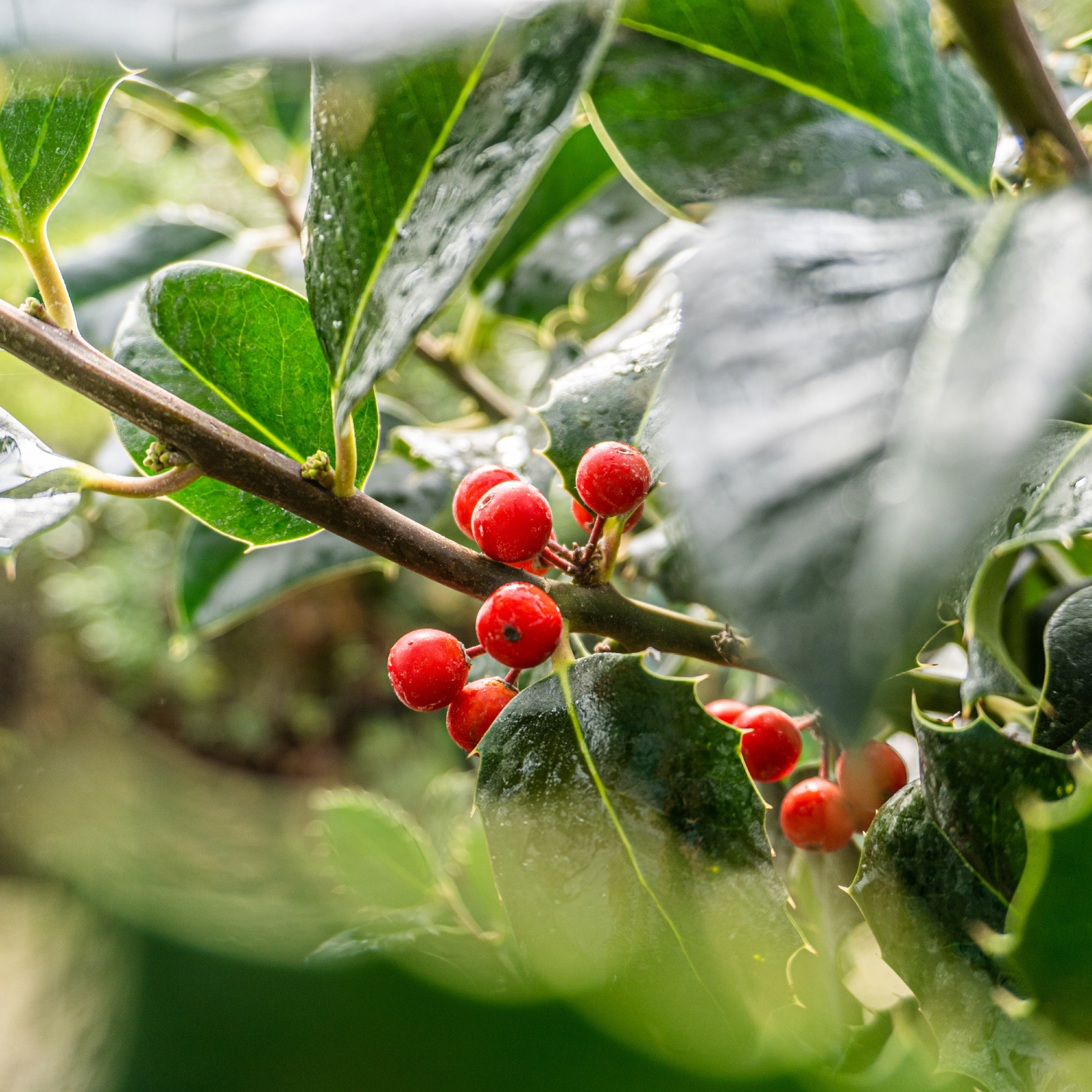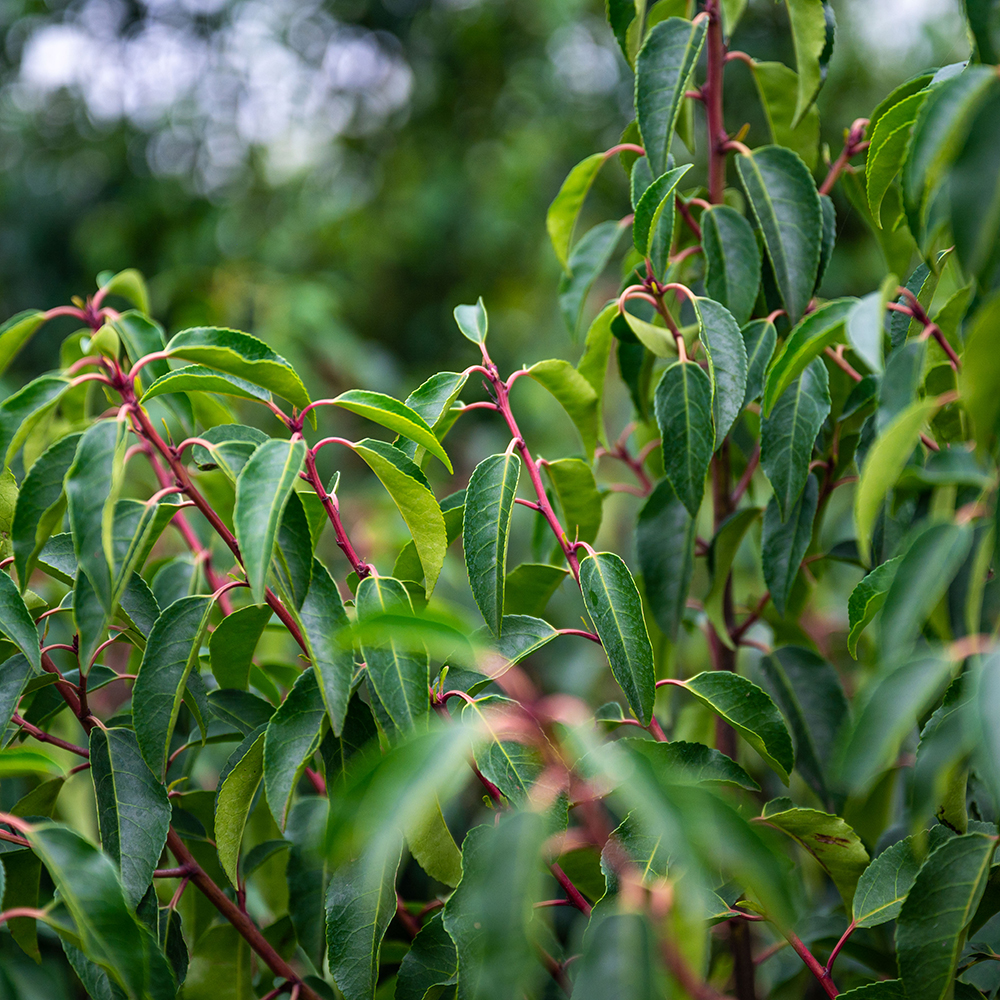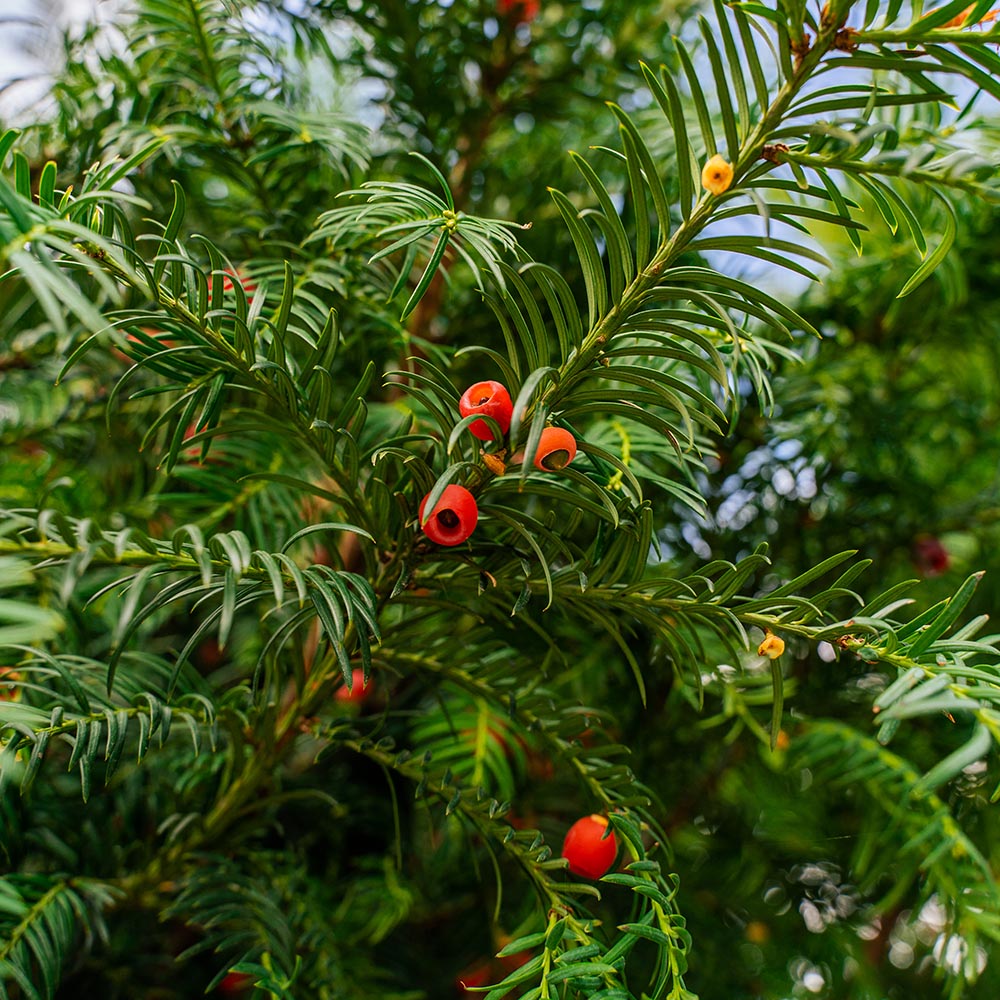The Benefits and Uses of Rootballs
A cost effective and convenient option for planting trees and shrubs
A rootball is a plant that has been grown in a field and lifted with its surrounding soil, in order to be transported. This process is often seen with many trees, larger hedging plants, and shrubs, and popular rootball species include Fagus sylvatica, Taxus baccata, and Prunus lusitanica.
The roots are trimmed and wrapped in a material to create a rootball, such as hessian or burlap, that decomposes naturally over time. Occasionally wire is also used for larger rootballs to provide strength and stability for transportation, and long-term support for the roots. There is a time scale for the process of lifting, transporting, and planting rootballs; trees start to be lifted during their period of winter dormancy, and finish before their growth begins again in spring. The rootball season usually starts in mid-October until the end of March, but different species may vary slightly in timescales. Each year can also differ, depending on the weather conditions; a particularly warm and dry October may cause a slight delay to the season. Outside of these months, there would be a higher risk of root disturbance and shock to the plant; resulting in significantly more failures.
Benefits of rootballs
As rootballs are grown in open fields, they benefit from optimal rainfall and nutrients in the soil, as well as plenty of space for their roots to grow without any restriction. This results in bushy plants that are ideal for hedging as they provide instant impact and screening, as opposed to those that may take years to reach these heights.
Rootballs come with many benefits; due to their growing method, they can be more cost effective than container grown plants, which are significantly more laborious to grow. You often see rootballs priced around 20 to 40% less than container grown plants. Rootballs tend to be more successful than bare root, as their establishment is faster and they are less likely to suffer from root shock. They are also an environmentally conscious option, as no heating, artificial lighting, or plastic pots are used within the growing process. Being field grown, rootballs have great resilience to weather conditions, as they are well adapted to being exposed to the elements. Whilst all plants require watering during their first year after planting, rootballs tend to get most of their water needs through rainfall during winter, whereas container grown plants have additional water requirements.
Rootball root systems are very strong and fibrous, and this is promoted by a process called undercutting. Undercutting usually takes place at the start of autumn, and involves a machine trimming the roots underground. This process promotes health of the plant and improves the success rate when they are replanted, as well as making the lifting process easier. When the roots have been trimmed there is less physical labour involved in lifting, and this makes rootballs even more cost effective. A further benefit of the undercutting process is root protection, as the trimmed roots reduce the risk of the root structure being damaged.
Whilst there are many advantages to rootballs, there are also a few disadvantages that should be considered. When compared to container grown shrubs and trees, there is more root disturbance with rootballs, and for this reason, we may unfortunately see occasional failures and they take longer to get established. This root disturbance exacerbates the need for regular watering and keeping the area free from weeds, so more maintenance is needed.
If rootballs become dry, they tend to show cracks, with the soil starting to break away and appear dusty in texture. If this problem persists, the rootball can become misshapen with its roots exposed, leading to further damage to the plant and its root system. A further disadvantage is their limited availability, and therefore, it’s important to plan ahead to ensure you make the most of rootball season. Container grown plants are useful for planting throughout the year, as their root system is not disturbed when transplanting, whilst rootball planting is limited.
A number of pests and diseases can affect plants, and rootballs may be more likely to be affected by soil borne pests or diseases in the ground they grow in, than their container grown equivalents. Examples include fungal diseases, such as Verticillium wilt, and bacterial diseases, including Phytophthora root rot.
Verticillium wilt is a soil-borne fungal disease that is caused by Verticillium dahliae and Verticillium alboatrum, and affects many ornamental plants. It presents with yellowing and wilting of leaves, and branch dieback. Verticillium wilt can occur all year round, but it is more likely to be found in spring and summer. If Verticillium wilt is found, it’s best to prune out and dispose of all affected branches.
Phytophthora root rot is a disease that’s caused by fungus-like organisms known as Phytophthora. It causes decay of both the roots and stem base of plants. This species is found in soil and container plants and is more likely to be present in heavy or waterlogged soils. Symptoms of Phytophthora root rot present with yellow, wilting, or sparse foliage, as well as dieback. Improving drainage is the best method to avoid Phytophthora root rot, however, if it is present, all affected plants should be removed and destroyed.

Rootball care and best practice
There are a number of best practice procedures and recommendations to ensure rootballs have the best chance of establishment. Ideally, rootball plants should be planted out within a few days of them being delivered. If there has been heavy rainfall or freezing temperatures then it’s best to wait two to three days until this has past. Most species can survive for at least a week, if they are watered as needed, kept in a cool, dry place, and protected from frost. Planting earlier in the season, ideally before spring, will provide the best chance of successful establishment. Taller plants, in particular, will have a higher chance of success when planted early.
Rootballs that have been dug up can be under stress, so it’s important to water the hole deeply, and then again once the plant is in position. Keeping the hessian sack attached when planting provides additional protection as it holds the roots together, until it disintegrates. Wire can also be left on the rootball, as the roots will eventually grow through the gaps. Once the rootball has been planted it can be mulched with bark chippings, compost, or other types of biodegradable mulch. Evergreen rootballs need to be kept well-watered, whilst deciduous species will need occasional irrigation until their growing season begins in spring. Rootballs can be given extra protection from any harsh weather conditions by using a horticultural fleece during winter. Tree staking kits or anchoring systems can be used to secure trees and large shrubs until they are fully established and can stand unsupported.
Popular rootball hedging plants

Ilex aquifolium

Prunus lusitanica
Ilex aquifolium
A slow growing evergreen holly with spiny, green foliage and a bushy habit. Grows up to 10m, depending on the variety. White flowers usually emerge in late spring or summer, and pollinated, female plants produce striking red berries in autumn and winter. Ilex aquifolium is ideal for growing as a specimen tree, clipped bush or hedging. Prefers full sun or partially shaded spots.
Prunus lusitanica
A large, bushy evergreen shrub with glossy, narrow, ovate green leaves on distinctive red stalks. It produces racemes of small white flowers in June which are followed by red berries that darken to purple. A great species for hedging that will tolerate chalky soil. Prefers full sun or partial shade and can grow up to 15 metres in height.
Taxus baccata
A bushy native evergreen with narrow, very dark green leaves. Insignificant flowers are followed by fleshy red fruits on female plants. Forms a dense formal hedge and can be clipped into topiary shapes. Prefers well-drained soil but can cope with any position.

Taxus baccata
Greenwood Holland
Greenwood Holland, based in the heart of Tree Valley Business Centre Opheusden in the Netherlands, was first established in September 2021, and has been integral in the importing and exporting of top-quality plants and trees between the United Kingdom and Europe. Opheusden is located on centuries-old alluvial soils that are incredibly fertile, and its clay-rich soil provides our trees with the very best start.
Our Greenwood Holland facility is highly efficient and has its own dedicated loading bay, allowing the team to load each tree in around 45 seconds, before making their way to the United Kingdom. The yard has designated areas for each of our trusted suppliers, which means larger quantities of plants being loaded onto each truck – a more economical process for our deliveries. Find out more about Greenwood Holland by reading our blog.
If you’d like more information on the rootball species we grow and supply, get in touch with the G Team today.

